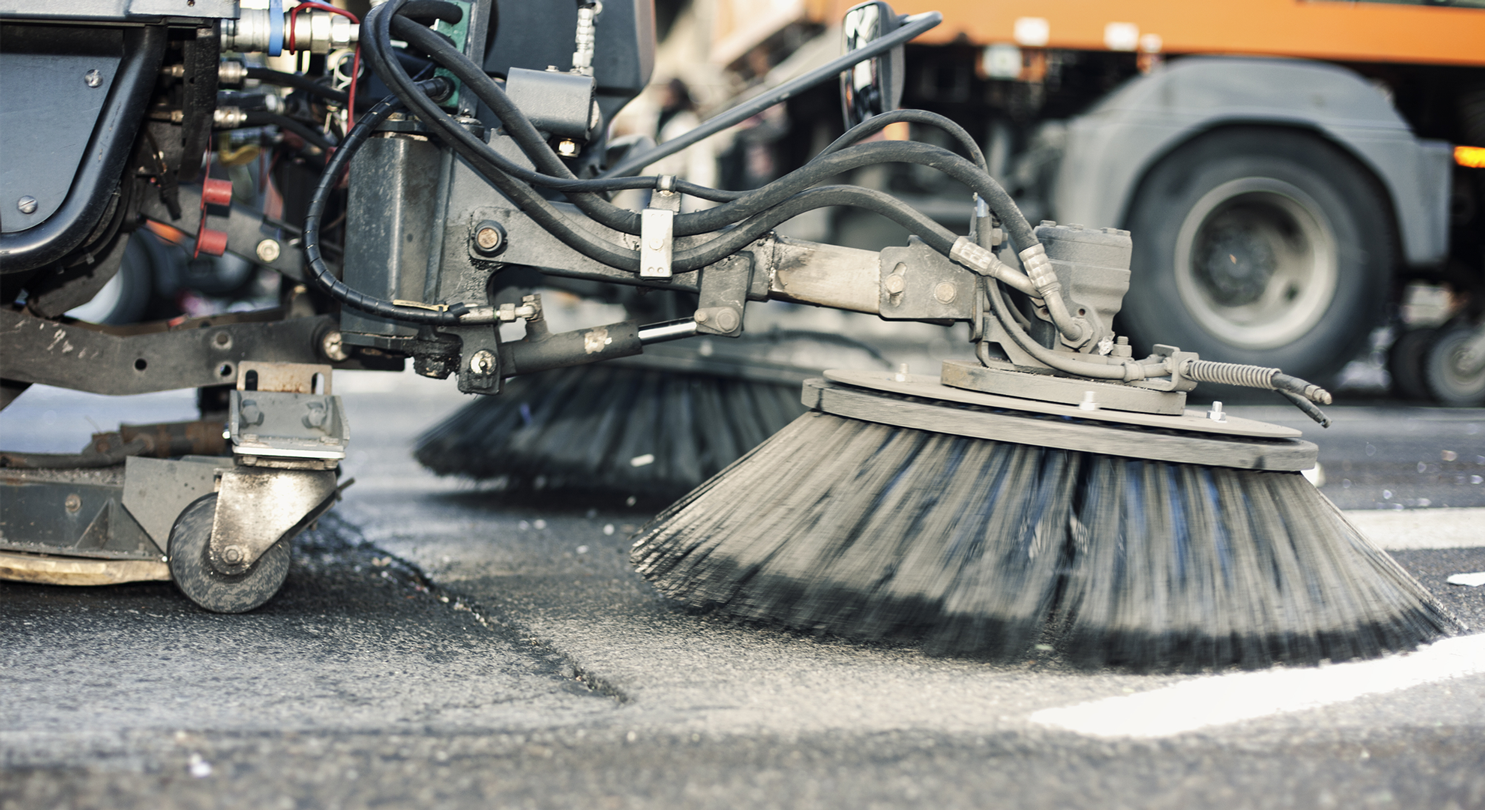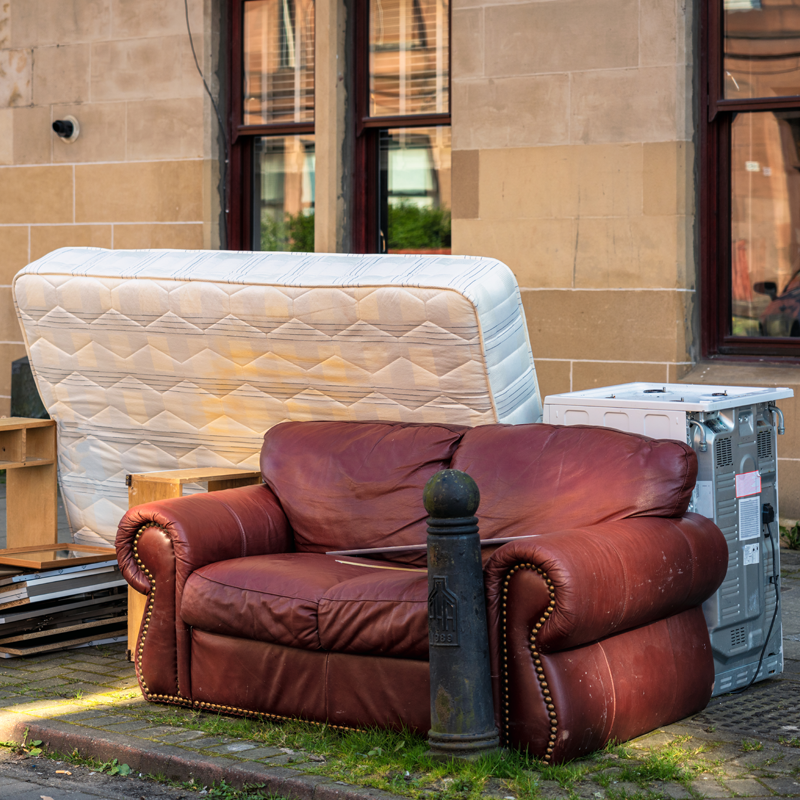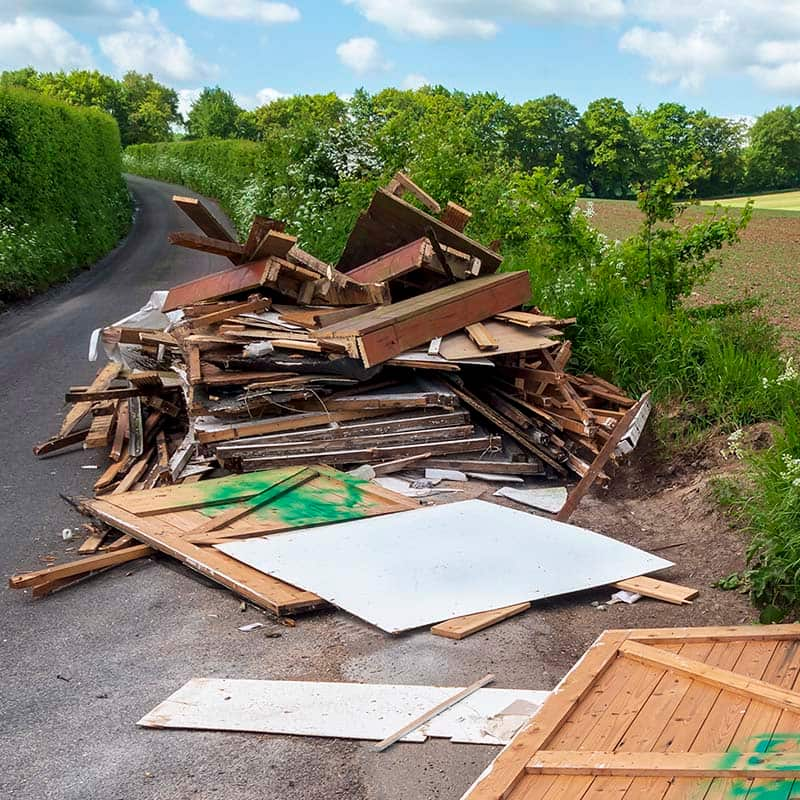
CoPLAR Guidance
It is everyone’s responsibility to make sure that we dispose of our materials correctly to avoid litter and flytipping occurring in our environment.
Preventing litter and refuse from happening in the first place helps to reduce the resources required to clean up and stops these materials damaging our environment, keeping Scotland a beautiful place to live, work and visit.
As well as making sure people do the right thing, there are also laws in place to help tackle the problem. This information is provided to help people understand the laws around litter and refuse.
Information for members of the public
The following summarises current understanding of the legislative framework and does not constitute legal advice.
What the legislation says
There are two duties within section 89 of the Environmental Protection Act 1990 (EPA 1990) that mean certain organisations (mostly public bodies) are to ensure, as far as is practicable:
- Keep land clear of litter and refuse
- Keep roads clean
Duty 1 applies to land and roads of Local Authorities, Scottish Ministers, Crown Authorities, Crown Estate, Educational Institutions and Transport Operators. Relevant land in most cases must be owned or managed by these duty holders, be publically accessible and open to the air. It includes paved areas, roads, parks, embankments, land covered by water.
Litter is regarded as ‘waste in the wrong place’, individual or a small number of items are thrown down, dropped or deposited and left in a public place by any person.
Refuse is waste material or in general terms rubbish, including household and commercial waste, flytipped waste and dog faeces. Refuse generally tends to be larger items than those categorised as litter.
Duty 2 applies to roads owned and managed by Local Authorities and Scottish Ministers. Local authorities are responsible for A (except special roads),B and C class roads as well as local roads and Scottish Ministers are responsible for M class roads and special roads.
Clean refers to the removal of detritus from roads, duty holders also need to consider what else might make a road appear unclean.
How do duty holders know what counts as duty fulfilment?
The Scottish Government provides practical guidance to duty holders to help them fulfil the duties. The Code of Practice on Litter and Refuse (CoPLAR) is a statutory guidance document issued under Section 89 (7) of the Environmental Protection Act 1990 and duty holders must have regard to it.
The principle underpinning CoPLAR is preventing litter and refuse from occurring the first place, over £1million per week is spent in Scotland tackling a problem that shouldn’t exist if people and organisations managed their waste responsibly allowing this money to be used for other public services. This includes a range of tactics including: communication, infrastructure, enforcement and partnership working.
CoPLAR provides a framework for duty holders to work to support them to meet the duties, this includes:
- Grades to measure the scale of the problem, where grade A means the duty is met, and other grades measure how far from grade A an area is.
- Duty 1 is graded from A-F and provides a number of items relating to each grade
- Duty 2 is graded from A-D dependent on the build-up of detritus
- Zoning land to understand the risk of problems occurring based on the number of people/vehicles using the area and the type of premises that may contribute to litter building up
- Zones 1-5 can be applied to land, with zone 1 areas being the highest risk of litter and refuse occurring and zone 5 the lowest risk
- Zone 6 is for roads above 40mph and operational railway land
- Zones should be published and you can find out which zone an area is by contacting the relevant land owner
- Response times given to restore an area to a grade A standard based on the zone category and the amount of litter/refuse in an area i.e. the more litter the quicker it should be restored.
- Where health and safety, access or equipment need to be considered then special considerations may apply and extended response times are provided to allow for measures to be put in place.
- Response times come into effect at the point the duty holder has become aware of the problem
- Duty holders who take an effective prevention first approach can progress through the extended response time bands
Detailed information is provided in the Code of Practice on Litter and Refuse (Scotland) 2018
What can I do if I notice a problem?
- Tell the duty holder responsible for the land you are concerned about, providing as much information as possible including location, what the problem is and if possible include photographs. You can refer to the grades provided in CoPLAR to describe the scale of the problem. If you continue to be concerned you should follow this up with them and take it to the next level of their complaint procedures.
- If you remain concerned you can refer the complaint to the Scottish Public Services Ombudsman.
- If you are concerned about a duty holder you can also apply to the Sheriff Court to issue a Litter Abatement Order which requires the duty holder to rectify the problem within a specified time. The court will want to understand the evidence and all the circumstances of the allegation. The Code of Practice on Litter and Refuse can be used as evidence in court. This involves a number of steps:
- Make sure you have as much information as possible to make your application - this could include timestamped photographs, location information, correspondence with the duty holder and any other relevant information.
- You will have to submit a formal notice to the relevant body of your intention to take your application to the Sheriff Court, specifying the matter of the complaint. You must give at least a 5 day notice period of your intent to make a summary application against them (Section 91 (5) of the Environmental Protection Act 1990.)
- If after the minimum 5 day notice period the litter has not been cleared, you can make your application to the Sheriff Court. This should include the information you have collected and the steps taken regarding the problem.
- Your application will then proceed through the court process, (the; timescales will be determined by the courts).
- If the duty holder is able to evidence that they have complied then with their duty an order won’t be made by the court (Section 91 (7) of the Environmental Protection Act 1990.)The duty holder should justify the approach they have taken, how they may have had regard to the code of practice and how they have fulfilled their duty as far as is practicable.
- If the sheriff is satisfied the land is defaced by litter, refuse or detritus a Litter Abatement Order will be issued requiring the body to clear the litter and refuse or clean the road within a time specified in the order (Section 91 (6) of the Environmental Protection Act 1990)
- If the sheriff is satisfied the land was defaced at the time of application and that there were reasonable grounds for making the application, the sheriff can order the body to pay expenses incurred by you in making the application and proceedings before the court (Section 91 (12) of the Environmental Protection Act 1990). Please note however that the sheriff may also award against the applicant.
Can I take any landowner to court?
Litter Abatement Orders do not apply to privately owned land which is not open to public access.
What can I do if the problem is on private land?
The person/organisation who owns or manages the private land is responsible for keeping their land in order. You could contact the land manager to report the issue.
In some circumstances local authorities can take action regarding litter and rubbish on private land; however, the local authority itself is not responsible for clearing litter from privately-owned land.
If waste on a piece of private land causes a nuisance or environmental health issue then you should report it to your local authority. If you suspect that a piece of land is being used to dump waste illegally you should report it to your local authority or local SEPA office.
Zoning relevant land and roads
Zoning helps to prioritise land, based on the potential for problems to build-up
Zoning helps duty holders to prioritise when and where to deploy resources based on how likely it is that litter and refuse or detritus will build up in an area.
Duty holders need to zone all of their relevant land and roads in line with CoPLAR.
Zones are defined by two factors:
- the number of people/vehicles using the area and
- the types of premises in the area that may contribute to problems building up.
For example, a busy city centre has more people and more businesses than a rural road with a few residential properties and limited vehicle movement, therefore the city centre is more likely to become littered quicker.
Defining zones in this way allows like-for-like comparisons to be made for areas with similar characteristics, for example helping to understand where and why people litter in certain areas. This knowledge can then be used to create long-term prevention strategies.
There are 5 zones based on these factors ranging from extremely high intensity of use to extremely low intensity of use. A 6th zone is available for roads above 40mph and operational railway land to allow for health and safety and access requirements to be factored in:
- Areas subject to extremely high footfall and/or vehicular movement and/or very high number of potential litter sources.
- Areas subject to high footfall and/or vehicular movement and/or high number of potential litter sources
- Areas subject to moderate footfall and/or vehicular movement and/or moderate number of potential litter sources
- Areas subject to low footfall and/or vehicular movement and/or low number of potential litter sources
- Areas subject to extremely low footfall and/or vehicular movement and/or very low number of potential litter sources
Roads over 40mph and Operational Railway Land excluding land and track within 100 metres of the platform.
Duty holders are required to assess and allocate the appropriate zone category to all of their relevant land including streets, open spaces, parks, roads, educational establishments, beaches, waterways, etc.
Zoning information should be made publically available and ideally digitally online.
Downloads
Full description of zones and examples of areas expected to fall within each zone and further guidance.
Frequently Asked Questions
Note: This does not constitute legal advice, instead it provides a guide for duty holders. It is up to duty holders to identify the relevant legislation for their requirements and seek advice from their own solicitors if needed.
What is the Code of Practice on Litter and Refuse (CoPLAR)?
CoPLAR is a statutory guidance document providing a framework to support duty holders to meet their duties under the Environmental Protection Act 1990 (EPA) Section 89 (1) and (2). Duty holders must have regard to CoPLAR when discharging their duties and it is admissible as evidence in court proceedings if a body is taken to court for dereliction of its duties.
CoPLAR has been reviewed and a new version was adopted in 2018. It has been updated to align with the National Litter Strategy – Towards a Litter-Free Scotland and provide more clarity on a number of areas. The new approach puts prevention activity on an equal footing with cleansing, providing the opportunity for duty holders to take a holistic approach to addressing the issues of littering and flytipping.
How will CoPLAR help achieve behaviour change and encourage personal responsibility as a norm?
CoPLAR 2018 supports the National Litter Strategy and its aims of litter prevention and increased personal responsibility. A focus on prevention provides duty holders with the opportunity to change their operations – moving away from reacting to issues by clearing up to engage in more proactive activities that encourage behaviour change and complement interventions being delivered in other areas.
What is the legislative ask on duty holders?
Environmental Protection Act 1990 section 89 places two duties on Duty Bodies and Statutory Undertakers:
- to keep relevant land clear of litter and refuse as far as is practicable
- to keep relevant roads clean as far as is practicable
What type of land is in scope of the duties?
Clarity on the definition of relevant land is provided in CoPLAR 2018, highlighting that all relevant land of duty holders is in scope. A number of factors determine if land is classed as relevant land: generally it is publicly accessible land that is open to the air on at least one side and is under the control of one of the duty holders
It can include roads, pavements, walkways, verges, embankments, parks, open spaces, land covered by water e.g. canals, ponds and much more. It also extends to land which is open to the air but is not publicly accessible for certain railway tracks and educational land.
How do you define ‘as far as is practicable’?
As far as is practicable means that duty holders should put in place all reasonable measures to meet their duties within the timescales given. It’s up to the duty holder to ensure that appropriate resources are put in place.
Some conditions or situations can make meeting the timescales impracticable. These could include:
- Extreme weather
- Accessibility
- Regard to other legislation needs to be taken into account
However, it would be for the courts to decide on a case-by-case basis what may be deemed impracticable.
Which materials need to be removed in order to meet the duties?
For duty 1, duty holders need to keep land clear of litter and refuse:
Litter is considered to be “waste in the wrong place” where individual or a small number of items are thrown down, dropped or deposited in a public place by any person and is left there or materials that escape from collection containers or vehicles.
Refuse should be regarded as waste material or rubbish, including household and commercial waste, flytipped waste, dog faeces, animal carcasses and car parts. Refuse tends to be larger items than litter.
For duty 2, as well as keeping land clear of litter and refuse Local Authorities and Scottish Ministers are required to keep roads clean. As minimum this means free from detritus for the purposes of this duty.
Detritus can include dust, mud, soil, grit, gravel, stones, rotted vegetation, and fragments of twigs, glass, plastic and other materials which can become finely divided. Leaf and blossom falls are to be regarded as detritus once they have substantially lost their structure and have become mushy or fragmented.
What is an acceptable standard?
The duty is to keep land clear of litter and refuse or roads clean, so to achieve this land and roads should meet the grade A standard as far as is practicable.
How do grades link to implementation of prevention measures and restoration times?
Grades allow organisations to more accurately assess how far from the grade A standard the land has fallen and how quickly it should be restored.
Quantitative descriptions for each grade improve the consistency of how grading is applied across the country and allows additional information to be gathered to help inform targeted prevention.
Why is land zoned?
Zoning helps duty holders to prioritise when and where to deploy resources. Zones are applied to all relevant land of a duty holder and are based on how likely it is that litter and refuse will build up in an area depending on the number of people/vehicles using the area and the types of premises in the area that may contribute to litter.
Coupled with grades and response times, they provide duty holders with a framework within which to evaluate their performance and take action.
How are zones allocated and why do they have different response times?
Land is split into zones depending on the likelihood of litter and refuse occurring in an area. This is determined by two common factors – the intensity of footfall/traffic and the number of premises which may lead to litter generation.
The speed at which litter and refuse accumulates influences how quickly an area needs to be restored. Response times are based on several factors:
- Investment in preventative activity
- The amount of the litter or the grade of an area - i.e. the more litter, the quicker it should be restored
- The potential for litter to be generated based on the zone category for the area
- Any special considerations in relation to health and safety
If there is a one off special event which increases footfall in an area, should the land be rezoned?
There is no need to formally rezone the area of land, however for the duration of the event the land manager and organisers should have regard to the response times for the zone which matches the expected footfall and potential litter sources in the area.
It is also recommended that the event organiser works with local partners to put a litter prevention plan in place.
Why is there a focus on prevention?
Litter and refuse in the environment should not be deposited there in the first place, it is up to individuals to dispose of their waste responsibly. Currently £1million per week is spent on clearing up a problem that doesn’t need to exist, this money could be better used elsewhere.
In the long-term, prevention means that areas will stay litter and refuse free for longer allowing these resources to be used in other areas.
Duty holders are encouraged to adopt prevention activities and shift resources towards preventative ways of working. Prevention tactics should be implemented as part of a range of measures to keep land clear of litter and refuse.
Duty holders are encouraged to monitor land to provide data to help inform preventative action, allowing source and context specific issues to be targeted using evidence to identify the cause of the issue.
What is classed as prevention?
Prevention means measures taken to prevent litter and refuse occurring in the first place.
How will budgets be linked to prevention activity?
It will be up to the duty holder to define how much they are currently spending on each activity defined in the revised code. Duty holders should consider what their organisation as a whole is doing to prevent litter and refuse this can be taken into account as well, not just the department responsible for clearing litter.
What are the requirements for monitoring land to ensure it is kept clear of litter and refuse?
An enhanced monitoring system is being developed to align with CoPLAR. This will allow more consistent data to be gathered to measure levels of litter and other environmental quality issues.
All duty holders should monitor their land on a regular basis to ensure compliance with their statutory duties, this can be done on a day to say basis through their own reporting mechanisms.
The Improvement Service have an indicator for Local Authorities to report their cleanliness scores. Other organisations may have internal reporting mechanisms or targets. It is recommended that duty holders should publish data to show they are fulfilling their duties.
To progress through the prevention bandings, duty holders must be able to provide evidence that their land is being maintained to an acceptable standard.
Furthermore, gathering intelligence will assist in the planning, delivery and evaluation of targeted initiatives to prevent litter and refuse occurring and help to optimise cleansing operations.
What are the consequences of not complying with the duties?
If they are not complying with the duties, duty holders can be taken to court by members of the public, or by a primary litter authority, under sections 91 and 92 of the EPA 1990.
CoPLAR provides guidance to duty holders and is admissible as evidence in court proceedings if a body is taken to court for dereliction of its duties. Courts must take it into account in legal proceedings where it is relevant.






